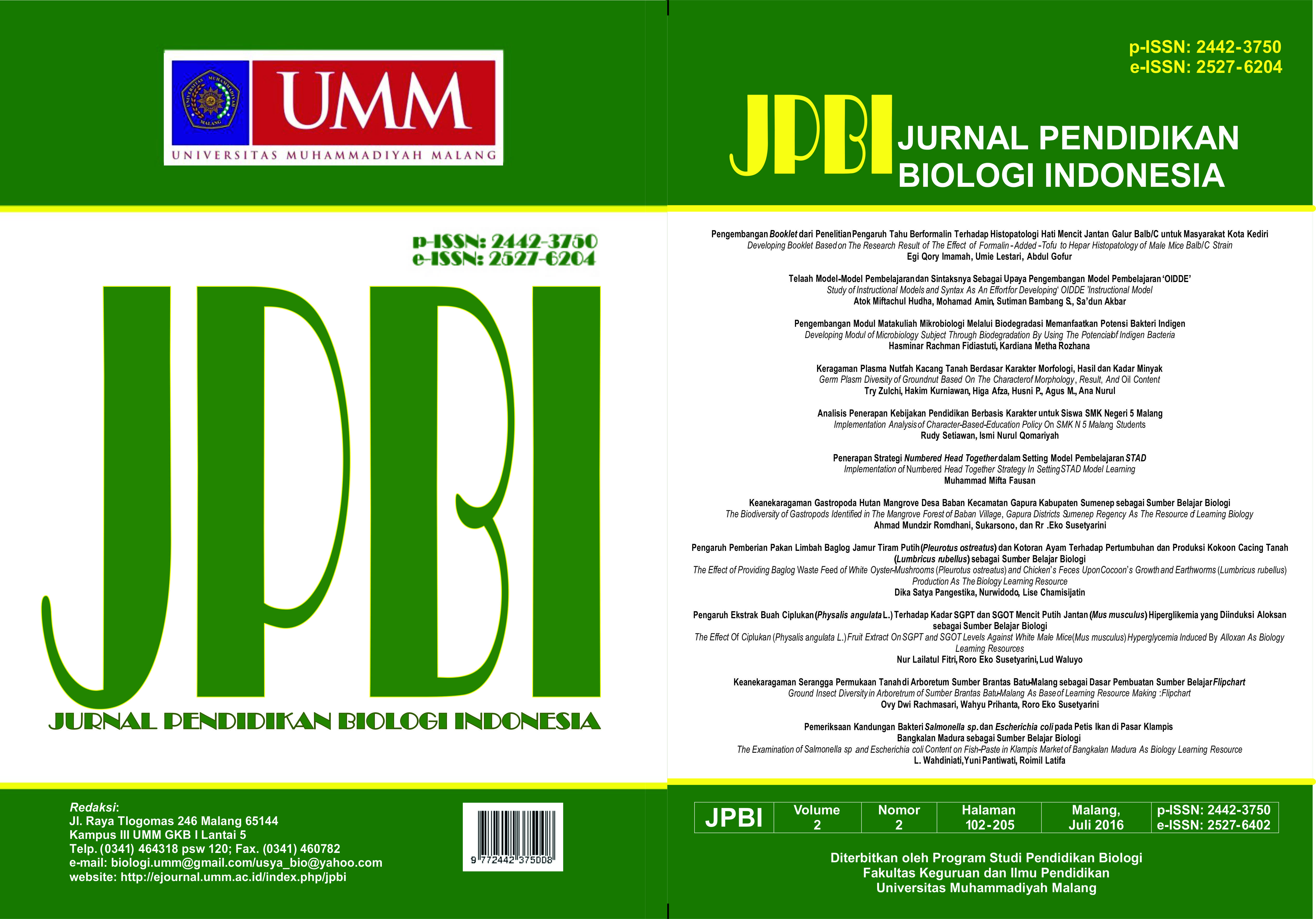IMPLEMENTATION OF NUMBERED HEAD TOGETHER STRATEGY IN SETTING STAD MODEL LEARNING
DOI:
https://doi.org/10.22219/jpbi.v2i2.3495Abstract
This study aims to determine the increase of motivation and biology student learning outcomes through the implementation of Numbered Head Together (NHT) strategies in setting Student Teams Achievement Division (STAD) learning model based Lesson Study (LS). Subjects in this study were students of class X IS 1 MAN 3 Malang. Implementation this study consisted of two cycles and each cycle consisted of three meetings. The data obtained were analyzed using descriptive statistical analysis of qualitative and quantitative descriptive statistics. The research instrument used is the observation sheet, test, monitoring LS sheets and questionnaires. The results of this study indicate that through the implementation of NHT strategy in setting STAD learning model based LS can improve motivation and learning outcomes biology students. Students' motivation in the first cycle of 69% and increased in the second cycle of 86%. While the cognitive learning, classical completeness in the first cycle of 74% and increased in the second cycle to 93%. Affective learning outcomes of students in the first cycle by 93% and increased in the second cycle to 100%. Furthermore, psychomotor learning outcomes of students also increased from 74% in the first cycle to 93% in the second cycle.
Keywords: Biology Learning Outcomes, Lesson Study, Motivation, Numbered Head Together, Student Teams Achivement Division.
Downloads
Downloads
Published
Issue
Section
License
Authors who publish with JPBI (Jurnal Pendidikan Biologi Indonesia) agree to the following terms:
- For all articles published in JPBI, copyright is retained by the authors. Authors give permission to the publisher to announce the work with conditions. When the manuscript is accepted for publication, the authors agree to automatic transfer of the publishing right to the publisher.
- Authors retain copyright and grant the journal right of first publication with the work simultaneously licensed under a Creative Commons Attribution-ShareAlike 4.0 International License that allows others to share the work with an acknowledgment of the work's authorship and initial publication in this journal.
- Authors are able to enter into separate, additional contractual arrangements for the non-exclusive distribution of the journal's published version of the work (e.g., post it to an institutional repository or publish it in a book), with an acknowledgment of its initial publication in this journal.
- Authors are permitted and encouraged to post their work online (e.g., in institutional repositories or on their website) prior to and during the submission process, as it can lead to productive exchanges, as well as earlier and greater citation of published work (See The Effect of Open Access).

This work is licensed under a Creative Commons Attribution-ShareAlike 4.0 International License.


















